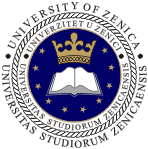OPTICAL MICROSCOPY EVALUATION OF PORTLAND CEMENT CLINKER - ACETIC ACID ETCHING PREPARATION
The microscope has become a more common tool in the cement industry. Evaluation of clinker using microscopy is a powerful technique that can help improve clinker production and cement quality. The key to using the microscopy is understanding the process of clinker production namely how raw materials are transformed into clinker. These transformatio...
By Nevzet Merdić, Nedžad Haračić, Ilhan Bušatlić, Nadira Bušatlić, Adis Merdić
THE INFLUENCE OF CLINKER DUST ON BLAST FURNACE CEMENT PROPERTIES
Clinker dust or cement kiln dust (CKD) is fine granulated material which generate during the thermal treatment of raw meal and during the clinker cooling process. By applying different methods in certain stages of the technological process it is possible to extract the mentioned dust. The chemical composition of the clinker dust depends on type and...
By Nevzet Merdić, Nedžad Haračić, Ilhan Bušatlić, Nadira B Bušatlić, Zehrudin Osmanović, Nisad Avdić
THE INFLUENCE OF THE PHOSPHORIC ACID AND CLAY ON THE PHYSICAL AND MECHANICAL PROPERTIES OF REFRACTORY CONCRETE
In recent decades, the interest in refractory materials which are formed without baking - by chemicalbonding - has increased significantly, as their production is less complex and more economical thanthe production of classical refractory materials, which involves a long baking process. In this work,as a chemical binder, phosphoric acid, which is i...
By Nadira Bušatlić, Ilhan Bušatlić, Nedžad Haračić, Nevzet Merdić
POSSIBILITY OF THE PRODUCTION OF CEMENT TYPE CEM I 52,5R IN CEMENTPLANT KAKANJ
This study is about possibility of the production of CEM I 52,5 in cementplant Kakanj satisfying some requirements for cement quality issued by EN 197-1. By EN 197-1, CEM I 52,5R consists of 95-100 % clinker and minor additional constituents of 0 - 5 %. Fly ash and granulated blast furnace slag are used as minor constituents in this study. The lowe...
By Ilhan Bušatlić, Nadira Bušatlić, Nevzet Merdic, Nedzad Haračić, Amila Music
